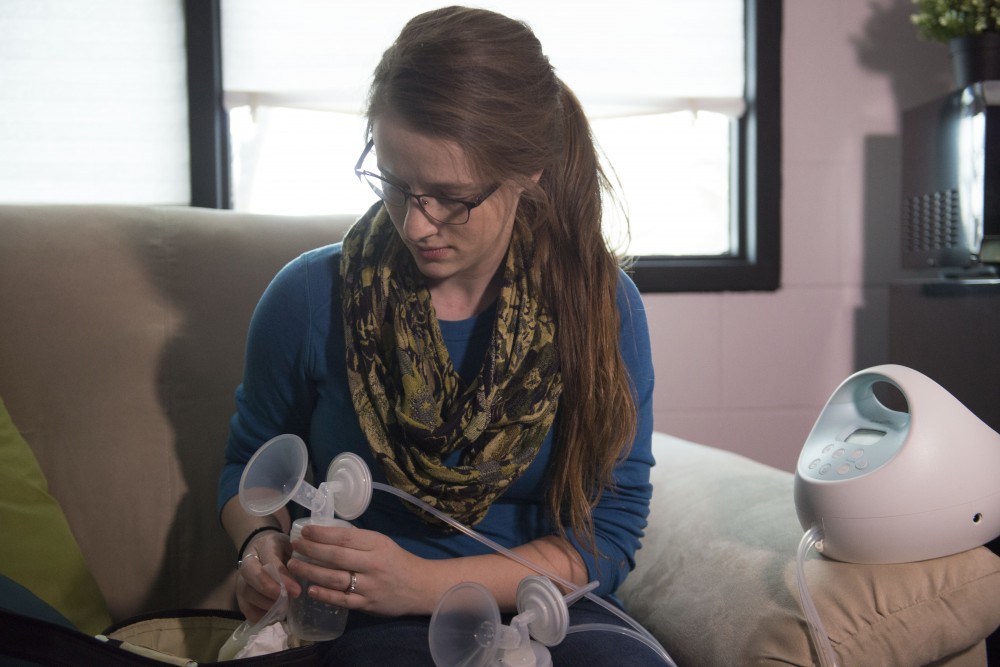Take a right off University onto Pleasant Street, and you enter a part of campus moms call a “lactation desert.”
There was no plan to accommodate nursing mothers when those buildings were constructed. There still isn’t.
After facilitating lactation services for nearly a decade, the volunteer-run Lactation Advocacy Committee is shepherding a resolution urging University of Minnesota administration to create a comprehensive lactation support policy.
The University has no centralized means of tracking complaints or overseeing lactation spaces throughout campus. Lactation advocates say this causes widely inconsistent experiences for student and employee parents.
“An institution as big as this one [doesn’t] have a breastfeeding support policy or anything written down about what a breastfeeding mom can expect to receive in terms of support and accommodations,” said LAC member Mikaela Robertson.

The LAC receives no University funding. Despite that, the ad-hoc committee has supported new mothers who need spaces to breastfeed or breast pump on campus since 2009.
The group keeps a database of available lactation spaces, studies the state of lactation support, and advocates for the expansion and maintenance of spaces already on campus. Its 45-50 volunteers are devoted, said LAC co-chair Sara Benning; however, the committee is no replacement for institutional oversight.
Lactation spaces have no official criteria for what they should offer. The Minnesota Department of Health recommends a private room with a sink and a refrigerator.
“Not a bathroom. Not a gross closet. A place where you would eat a sandwich,” said LAC co-chair Sarah Keene. “Breast milk is food, and it needs to be expressed in a sanitary environment.”
Around forty-two percent of the spaces on campus meet the MDH criteria, according to a 2018 LAC report.
The MDH also recommends lactation rooms be within a five-minute walk of places of work or study, but spaces can be scarce.
“Almost every Monday and Wednesday, I’m late to a class because I need to go pump and the closest pumping area is four buildings down,” said student mother Amanda Sullins.
Sullins has been a parent for nearly a year, but still pumps twice a day. She has a 15-minute interval between classes, which is a problem when it takes at least as long to pump. Unlike the “dusty” and “forgotten” one she said she previously used in Anderson Hall, she uses a newer, more comfortable and sanitary space in Moos Tower.
Sullins said pumping can be inconvenient, but that it’s better than the alternative. “You get super uncomfortable. It literally feels like you’ve got softballs on your chest, and it hurts,” she said.
The American Academy of Pediatrics recommends mothers breastfeed for a year or longer after a baby is born. However, limited lactation resources can make that challenging. Half of respondents to a 2012 Student Parent HELP Center survey who had given birth in the three years leading up to the survey stopped breastfeeding because they didn’t have space to do so.
Minnesota and federal laws guarantee unpaid break time to mothers to breastfeed or breast pump, and the University recognizes lactation as a legitimate absence under Title IX.
But compared to its peer institutions, LAC members say the University is falling behind in supporting new mothers. Four other Big 10 schools have lactation support policies on the books, and two others have them in the works.
The LAC passed a similar resolution in the University Senate in 2013, calling for the University to address shortcomings in its lactation resources. Administration pledged to support lactation services, but advocates said it was mostly lip service.
“I did not see that have much of an impact at the time. We didn’t notice any difference in administrative buy-in for any actions that we took afterwards,” said Susan Warfield, LAC chair at the time.
This time around, the LAC is garnering a wider range of support. The resolution has been endorsed by several student, faculty, and staff governance groups.
Benning said the group’s request is more specific this time around: a policy that ensures lactation spaces up to MDH standards, guarantees all mothers break time and charges an official person or department with overseeing lactation resources.
“Ten years of the LAC and it’s time for administration to help do the work that we’ve been doing,” Benning said.

















